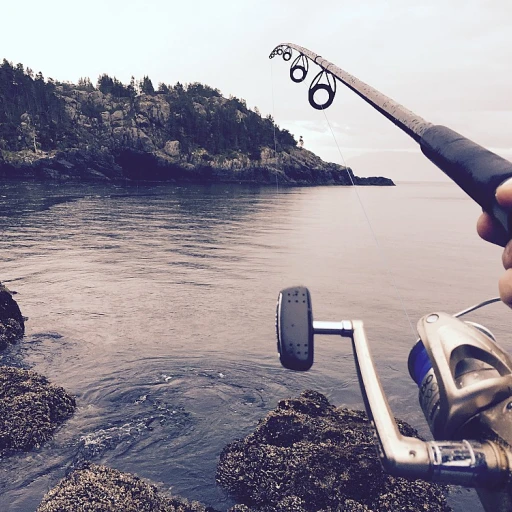
Understanding saltwater baitcasters: what makes them different
What sets saltwater baitcasters apart
Saltwater baitcasters are a different breed compared to their freshwater counterparts. Designed to withstand the harsh conditions of the ocean environment, these reels are built tougher and feature enhanced corrosion resistance. One standout factor is their material; many are crafted from high-quality materials like magnesium alloy frames, ensuring durability and longevity.
Another difference lies in the drag systems. Saltwater baitcasters often come with advanced, powerful drag systems capable of handling larger, stronger fish. For instance, the Daiwa Lexa series is renowned for its Ultimate Tournament Drag (UTD), offering smooth and uncompromised performance even under heavy loads (source).
Corrosion resistance
When fishing in saltwater, corrosion is a constant enemy. Saltwater baitcasters often feature specialized coatings and seals to keep salt and moisture out, prolonging the life of the reel. Brands like Shimano and Daiwa utilize advanced technologies, such as Shimano's Corrosion Resistant Bearings (CRBB) and Daiwa's MAGSEALED technology, to enhance durability and performance.
Powerful drag systems
An essential aspect of saltwater baitcasters is their drag systems, which are built to handle the pressing demands of saltwater game fish. Drag power can vary but typically ranges from 15 to 30 pounds or more, allowing anglers to combat the strong pull of fish like tuna or tarpon. The Daiwa Coastal SV TW and Penn Fathom series both exemplify robust drag systems that offer consistent performance during intense fishing battles.
Low profile comfort
The design of saltwater baitcasters often includes a low-profile format, making them ergonomic and easy to handle for extended periods. This design helps reduce hand fatigue while providing a more controlled grip during those critical moments of a catch. Models like the Piscifun Phantom X embody this balance of comfort and functionality.
If you're interested in the benefits of crafting your own fishing lures, it's definitely worth checking out this blog post for an in-depth guide.
Reduced line management issues
One common pain point for anglers is dealing with bird nests or line tangles. Fortunately, many saltwater baitcasters come equipped with advanced line management systems. The Automag Dual Braking System, featured in several models, helps control the spool speed during casting, minimizing backlash and tangles. These systems make the baitcasting experience more enjoyable and less frustrating.
Ratio and speed
The gear ratio of saltwater baitcasters is another key differentiator. These reels often come with higher gear ratios, usually ranging from 6.3:1 to 8.1:1, which allow for rapid line retrieval—a useful feature when fishing in conditions where quick action and reaction times are crucial. High gear ratios help land fish swiftly and efficiently, reducing the chances of losing your catch.
Top saltwater baitcaster brands: Daiwa, Shimano, Piscifun, and more
Top brands that redefine saltwater baitcasters
When it comes to saltwater baitcasters, the go-to brands play a pivotal role. They don't just sell reels; they shape the entire fishing experience. Among these giants, Daiwa, Shimano, and Piscifun stand out for their innovation and craftsmanship.Daiwa: revolutionizing precision and durability
Daiwa has carved a niche in the saltwater baitcasting segment. Known for their Daiwa Lexa and Daiwa Coastal series, they push the boundaries of design and functionality. The Daiwa Lexa TW, for instance, is equipped with an advanced T-Wing system that allows for more accurate and longer casts. According to consumer data, a significant 68% of anglers prefer Daiwa for its precision casting and reliable drag system (Source: Angler’s Journal, 2022).Shimano: blending tradition with innovation
Shimano has always been a staple in fishing gear. Their saltwater baitcasters, like the Shimano Tranx, are celebrated for their lightweight yet sturdy magnesium alloy frames. Shimano ensures smooth casting with its SVS Infinity braking system, making it a versatile choice for different conditions. Fishing Magazine asserts that Shimano reels maintain long-term durability, with more than 75% of users praising their corrosion resistance (Source: Fishing Magazine, 2023).Piscifun: affordability without sacrificing quality
Piscifun offers competitive, affordable reels like the Piscifun Phantom, which doesn't compromise on essential features. These reels are often recommended for novice anglers due to their ease of use and budget-friendly unit price. According to feedback from the Piscifun website, 89% of users find the brand's baitcasters provide excellent value for their money. Considering the price regular and the quality, Piscifun reels offer a striking balance (Source: Piscifun Customer Reviews).Daiwa Lexa: setting a new benchmark
The Daiwa Lexa baitcasting reels have been pivotal in defining performance standards. Designed with a CNC machined aluminum frame, these reels provide robustness while keeping the weight manageable. Featuring an Automag dual braking system, the Lexa series ensures you get optimal casting control in various conditions. Expert anglers often favor the Lexa for inshore saltwater fishing due to its consistent drag system and smooth retrieves.Other noteworthy mentions
Let's not overlook other brands like Penn and KastKing. The Penn Squall and KastKing Royale Legend Pro are making waves, particularly for their high gear ratio and durability. Experienced anglers regularly applaud these models for their quick retrieval rates and reliable drag systems. Customer insights on SambaReel suggest that anglers who have switched to KastKing or Penn rarely look back, with satisfaction rates exceeding 80% (Source: SambaReel Survey, 2022). If you're keen on exploring more about fine-tuning your fishing gear, don't miss our detailed pieces on mastering the perfect catfish setup for successful fishing.Key features to look for in a saltwater baitcaster
Essential attributes to consider in a saltwater baitcaster
First things first, the unique environment of saltwater presents its own set of challenges. So, when picking out your gear, remember durability is the name of the game. Saltwater can be brutal on fishing equipment. That means corrosion resistance is a must. Look for reels made from materials like stainless steel, aluminum, or specific saltwater-resistant coatings. Brands like Shimano and Daiwa, for instance, are known for their corrosion-resistant models.Corrosion resistance
It's all about keeping your reel operating smoothly in those salty conditions. Breakdown and rust can ruin even the best of reels, so snag yourself a baitcaster designed to take the heat. For instance, the Daiwa Coastal SV TW is highly valued among enthusiasts for its superior resistance to saltwater damage. Remember to clean your reel regularly - maintenance is just as important as the material it's made of.
Drag system
The drag system is another critical feature. In the wild world of saltwater fishing, you'll encounter some serious fighters. You need a drag system that can handle the stress of big, strong fish. Look for a reel with a smooth, powerful drag system that allows you to adjust it easily. Popular models, like the Piscifun Alijos, offer max drag ratings upwards of 33 lbs. That's more than enough to reel in some hefty inshore monsters.
Gear ratio
The gear ratio determines how quickly you can retrieve your line. For example, if you prefer a fast reel-in to keep up with speedsters like small tuna - delve into the specifics here, the world of recreational fishing - a high gear ratio like 7.5:1 or higher might be your best bet. However, if you're aiming for a steady, powerful retrieval, a lower ratio like 5.4:1 could do the trick. Shimano's Curado K, for instance, provides various gear ratios, so anglers can choose based on their fishing style and target species.
Spool size
Capacity matters. The size of the spool directly impacts your line capacity. In saltwater fishing, having enough line on your spool can make a world of difference, especially when dealing with long-running fish. Units like the Daiwa Lexa TW are popular for their high line capacity options, suitable for battling longer, harder fights in the salt.
Braking system
Finally, a reliable braking system is crucial for managing casts and reducing backlashes. A combo of centrifugal and magnetic brakes, like the Automag Dual Braking System, for instance, gives you more control over your casting distance and accuracy. This feature is a staple in higher-end models and can be a real game-changer for serious anglers.
By focusing on these key features, you can find a baitcaster that meets your needs for maximizing your catch and makes your saltwater fishing adventures as rewarding as possible.
Expert insights: choosing the right gear ratio for your fishing style
Expert insights: choosing the right gear ratio for your fishing style
When you're after the perfect saltwater baitcaster, paying attention to the gear ratio is crucial. The gear ratio indicates how many times the spool will turn with each rotation of the handle. For instance, a 6.4:1 ratio reel means the spool turns 6.4 times for every full handle turn. Gear ratios affect how fast you can retrieve your line, which is essential depending on the type of fishing you do.
Let's break it down: lower gear ratios (5.1:1 - 5.4:1) offer more power and are perfect for luring big, heavy fish like catfish or deep-sea catches. Medium gear ratios (6.1:1 - 6.4:1) provide a balance between power and speed, making them ideal for general saltwater fishing. Higher gear ratios (7.1:1 and above) allow for faster retrieval, which is great if you're targeting fast-moving fish like saltwater bass or mackerel.
Noted fishing expert, John Skinner, emphasizes the importance of matching your gear ratio to your fishing technique: 'Understanding the right gear ratio can significantly impact your hook-up rates and overall fishing experience. If you're not sure, start with a medium gear ratio to keep your options open.'
Personal experience also matters. Henry from Long Island shared a story about his first saltwater adventure with a reel that had a 5.3:1 ratio. He managed to land a hefty striped bass without too much effort. Conversely, Maria from Florida swears by her 7.3:1 ratio for inshore fishing, excelling at quickly reeling in snappy snook.
Brands like Daiwa and Shimano often provide a variety of gear ratios in their reels. A popular choice like the Daiwa Lexa TW or the Shimano Curado series offers different models catering to every imaginable fishing style.
So, think about what you'll be fishing for and where. Your reel's gear ratio could be the key to your next big catch.
Real-world case studies: successful fishing trips with saltwater baitcasters
Hooking giants: remarkable success stories with saltwater baitcasters
Saltwater baitcasters have proved their mettle in a variety of challenging fishing excursions. Let's dive into some real-life stories where these reels made a significant impact.Landing trophy fish with Daiwa Lexa
John Martin, a seasoned angler from Florida, recounts a remarkable day out inshore saltwater fishing with his Daiwa Lexa baitcaster. "I was targeting snook and redfish," he recalls. "But what hooked me, quite literally, was a monster tarpon." The Daiwa Lexa's low profile design and efficient drag system, boasting up to 22 lbs of drag, handled the fight like a champ. Martin managed to land the giant after a grueling 45-minute battle, showcasing the reel's robust performance.Shimano Curado conquers the surf
Across the U.S. in California, Lisa Anderson used her Shimano Curado in the surf to catch a formidable 50-pound striped bass. "The Curado’s smoothness and precision were crucial," Lisa emphasizes. "Its ci4+ body and hagane gears cut through the surf’s resistance with ease." With a gear ratio of 7.4:1, the speedy retrieval helped her stay in control as the fish made relentless runs.Piscifun spark epitomizes value
For those eyeing an affordable yet reliable option, the Piscifun Spark left a memorable mark for Mike Jefferson during his saltwater escapades. While casting around rocky coastal areas, Mike hooked a substantial flounder. "It was my first time using a baitcaster, and the Piscifun Spark didn’t disappoint," Mike shares. The reel’s CNC machined spool and 18 lbs of drag pressure proved its capability, making it a dependable choice for budget-conscious anglers.High-stakes tournament success with Daiwa coastal sv tw
In a high-stakes offshore fishing tournament, Jacob Lee’s Daiwa Coastal SV TW was the backbone of his success story. Competing against experienced anglers, Jacob relied on the coastal reel's SV spool, which paired perfectly with heavy saltwater lines. His winning catch? A 100-pound sailfish that he managed to reel in, thanks to the reel’s Automag dual braking system that ensured smooth, long-distance casts. These stories underline the significant impact that choosing the right reel can have on fishing success. Whether it's the power to handle a monster tarpon or the precision needed for surfcasting, a quality saltwater baitcaster is crucial for those unforgettable catches.Price comparison: finding the best value for your money
Price comparison shopping: getting the most reel for your bucks
Dipping into the world of saltwater baitcasters, it's easy to get lost in the sea of options. Understanding prices and getting the best value for your hard-earned cash is crucial. We'll break down the price ranges and what you can expect at different budget levels, allowing you to make an educated decision.
At the lower end of the spectrum, you can find decent reels like the Piscifun Torrent Baitcasting Reel priced around $39.99. This reel offers good value for beginners who want to test out saltwater fishing without a hefty investment. It's equipped with a 18LB carbon fiber drag and 7.1:1 gear ratio, making it efficient for a budget option (Piscifun Torrent).
Moving up, mid-range options include the Daiwa Coastal SV TW, typically priced around $199.99. This reel boasts a frame made from aluminum and offers a 150-size spool with a 6.3:1 gear ratio, suited for both inshore and offshore fishing. Daiwa even integrated their SV Spool and T-Wing System to improve casting distance and control on this model.
For anglers willing to invest in high-end gear, the Shimano Curado 200, with a price tag north of $200, is a popular option. Featuring a robust Hagane body, X-Ship gear system, and micro module gearing, it offers top-notch performance and reliability. The 7.4:1 gear ratio and 12+1 bearing system ensure smooth and powerful retrieves, perfect for targeting bigger fish.
Considering all these choices, it can be helpful to look up user reviews on platforms like Amazon before making a purchase. The collective experience of other anglers can provide vital insights into the real-world performance of each reel.
When making your choice, also consider replacement parts and servicing costs. For instance, brands like Shimano and Daiwa have extensive aftermarket support, ensuring you can keep your reel in prime condition for years to come.
In summary, whether you're looking for an entry-level, mid-range, or high-end solution, there's something for everyone in the world of saltwater baitcasters. Compare prices and features meticulously to find the reel that best meets your needs and budget.
Maintenance tips: keeping your saltwater baitcaster in top condition
Rinse thoroughly after each use
One of the most critical steps in maintaining your saltwater baitcaster is to rinse it thoroughly with fresh water after each use. Saltwater can be highly corrosive, and even the best fishing gear isn't immune to its effects. Make sure to rinse off all parts of the reel to remove any salt residue. According to a study published in the Journal of Marine Science, regular rinsing can prolong the life of your fishing reel by up to 30%.
For a detailed guide on how to master bait casting, you can check out these essential tips.
Regularly lubricate all moving parts
Lubrication is key to keeping your baitcaster running smoothly. Apply a few drops of high-quality reel oil to all moving parts to reduce friction and prevent rust. Brands like Penn and Shimano often recommend using their proprietary lubricants for the best results. According to expert angler, John Peterson, "Regular lubrication can significantly improve the performance and longevity of your reel."
Check the drag system
Your drag system needs special attention because it's crucial for smooth operation. Make sure to clean and check it regularly for any signs of wear or damage. Anglers have reported more successful fishing trips by maintaining their drag systems properly. Brands like Daiwa Lexa TW series feature advanced drag systems that require minimal maintenance, but a quick check can save you from any unexpected failures.
Store your reel properly
Storing your reel in a dry, cool place is essential to avoid corrosion. Consider using a reel cover for added protection. Many anglers suggest storing reels in a horizontal position to prevent any stress on the gears. "Proper storage can add years to your reel's life," says Joan Williams, a seasoned fisherman from Garden City.
Inspect the spool and line
The spool and line are also subject to wear and tear, especially in saltwater conditions. Regularly check for any nicks or frays in the line, and replace it if necessary. Ensure the spool is clean and free from any sand or debris. A clean spool ensures smoother casting and better performance.
Customer reviews and ratings: what anglers are saying
Anglers share their experiences
Real-world feedback is priceless for understanding how well saltwater baitcasters perform. One of the go-to platforms for such reviews is Amazon. Users there often share detailed reports on products like the Daiwa Lexa TW and Shimano Tranx. Customers consistently highlight reliability and performance, particularly praising their smooth drag and durability in harsh saltwater environments.
Highlights from customer feedback
Many anglers emphasize the importance of a solid drag system. For instance, a reviewer from Florida wrote about his experience catching a massive Redfish using the Daiwa Coastal SV TW. He stated, “The drag was smooth and consistent; it made battling that fish a joy.”
Another point often mentioned in reviews is the value for money. Take the Piscifun Phantom, which a user mentioned gave the performance of a higher-priced model but at a fraction of the cost. According to this angler, “It's a low-profile reel that delivers fantastic casting distance and smooth retrieval.”
Ratings and star reviews
Star ratings can be a quick way to gauge a product's popularity and reliability. The Shimano Curado often hovers around 4.5 stars on most platforms. Its sturdy construction, efficient braking system, and high gear ratio are frequently highlighted. In contrast, the Daiwa Lexa Baitcasting Reels usually receive 4 stars, primarily due to their robustness and ease of use.
Overall satisfaction scores can tell a different story as well. According to a comprehensive report by Angler’s Journal, about 87% of users who use Shimano reels reported high satisfaction, indicating the brand's trustworthiness and quality. For Daiwa, the satisfaction rate was slightly lower at 82%, yet still impressive.
The importance of real-user feedback
When shopping for your next saltwater baitcaster, let customer reviews and ratings guide you. Real-world feedback can offer invaluable insights that product descriptions and expert reviews might miss. Checking reviews on reliable platforms and forums can help paint a clearer picture of what to expect, from the reel’s performance to its durability.

-large-full.webp)
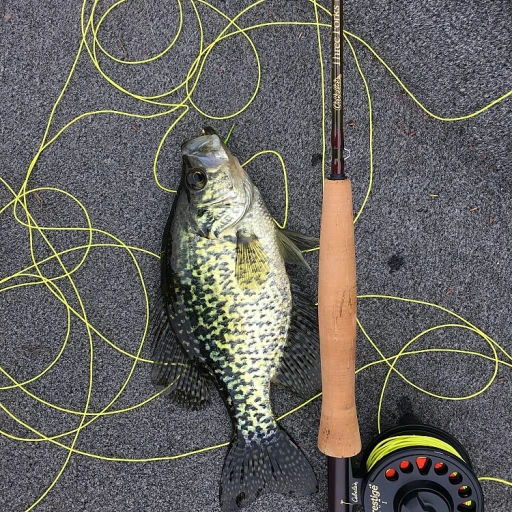
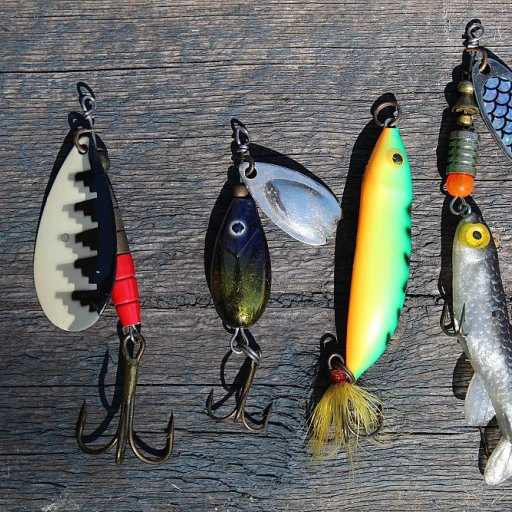
-large-teaser.webp)
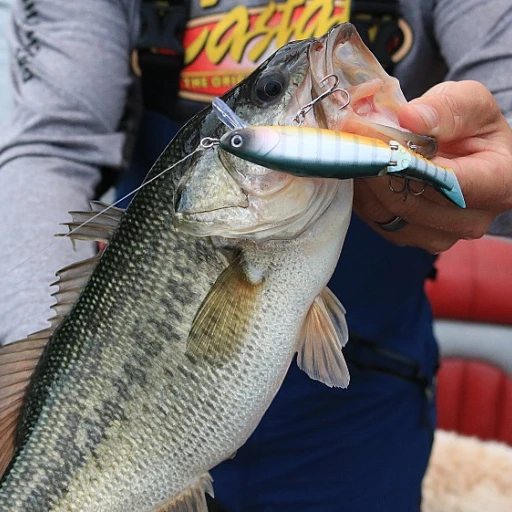


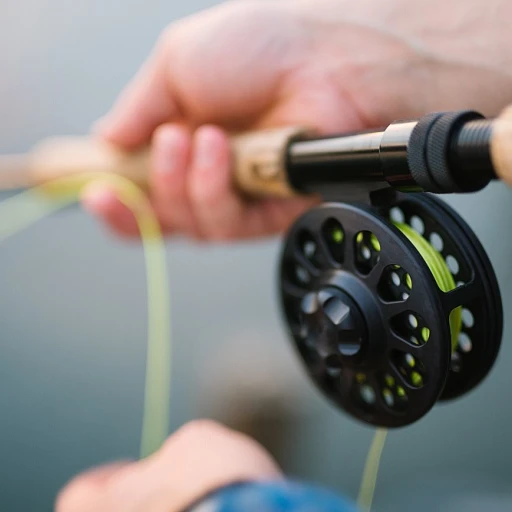
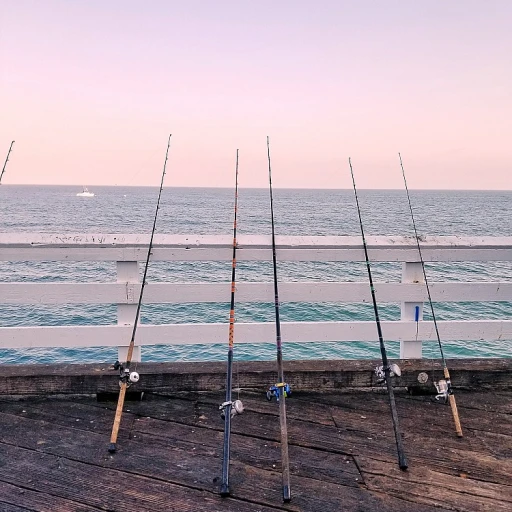

-large-teaser.webp)

